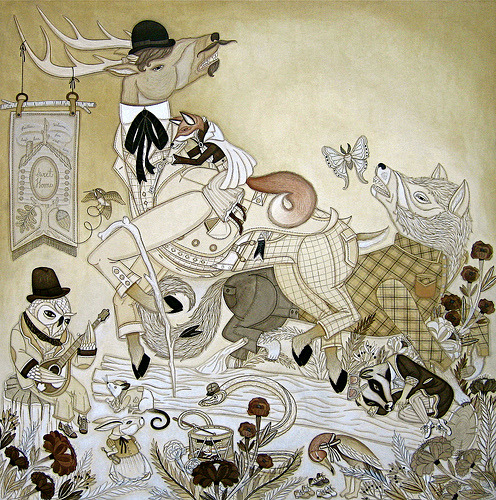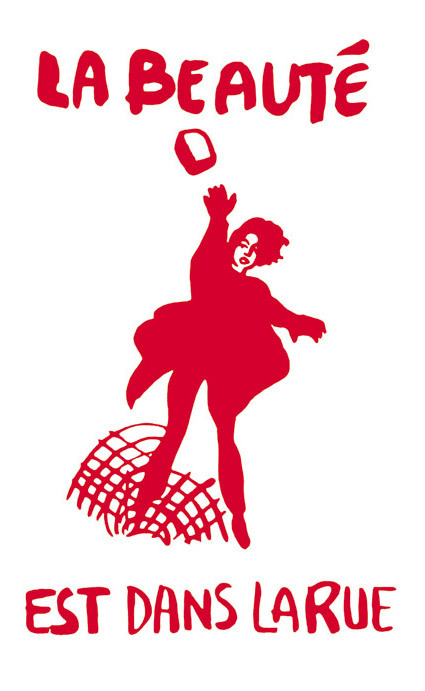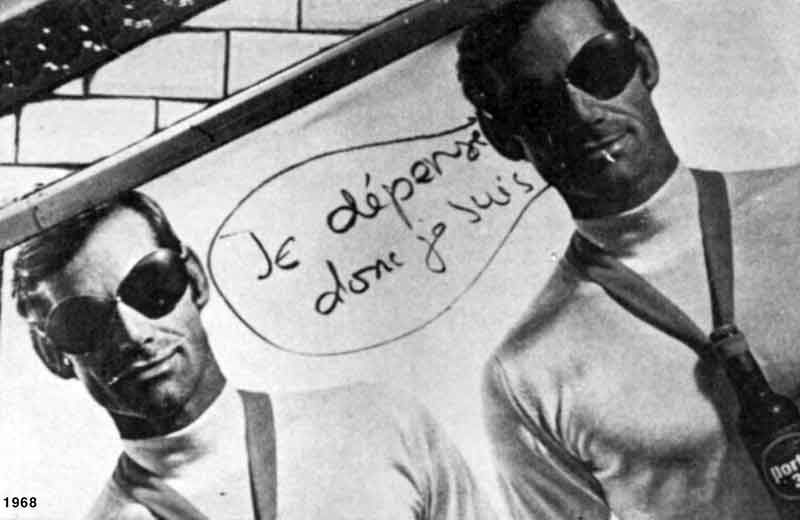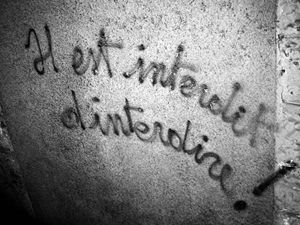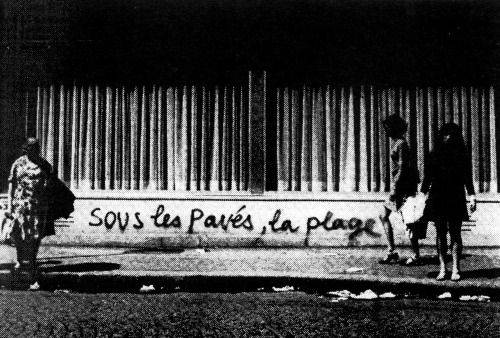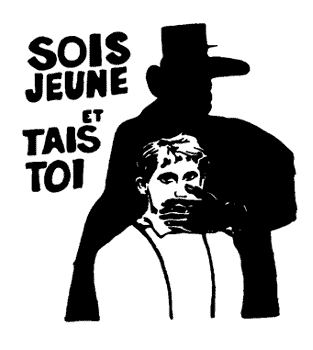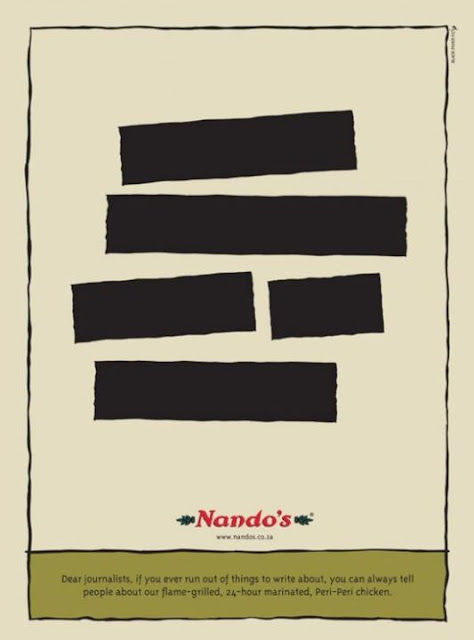Tuesday 29 November 2011
Monday 28 November 2011
My Fantasy Birthday/Xmas Wishlist
It's my birthday next week and Christmas not long after.
This is my wishlist:
(hint-hint, nudge-nudge family & friends)
Anything by Christpher Strong
(I am especially fond of the monochrome striped high-waisted and high-waisted sheer black maxi skirts)
The Holy Innocents by Gilbert Adair
Clock earrings from LikeClockwork Steampunk Jewellery by Samantha Tavener
Perfume (My current top three fragrances are DKNY Red Delicious, Estee Lauder Sensuous & YSL Parisienne)
Holiday Trip to Vietnam
MAC Fix Plus
A black strapless one piece à la Marilyn
Radiohead live in concert

Sunday 27 November 2011
FORM DREAM COMMITTEES: Graffiti from the Paris Riots 1968
Beauty is in the street
I spend therefore I am
(a play on the Descartian mantra 'I think therefore I am,' in French "je pense donc je suis")
Under the paving stones, the beach
Be Young and Be Quiet
(a variation on "sois belle et tais toi" meaning 'sit there and look pretty')
Revolt you cuckold!
Society is a carnivorous flower.
Never work
A petition is a poem, a poem is a petition
Non, je ne regrette rien
Ni le bien qu'on m'a fait
Ni le mal tout ca m'est bien egal
Non, rien de rien
Non, je ne regrette rien
C'est paye, balaye, oublie
Je me fous du passe
Avec mes souvenirs
J'ai allume le feu
Mes chagrins, mes plaisirs
Je n'ai plus besoin d'eux
Balayees les amours
Et tous leurs tremolos
Balayees pour toujour
Je repars a zero
Non, rien de rien
Non, je ne regrette rien
Ni le bien qu'on m'a fait
Ni le mal tout ca m'est bien egal
Non, rien de rien
Non, je ne regrette rien
Car ma vie, car mes joies
Aujourd'hui ca commence avec toi

Thursday 24 November 2011
Tuesday 22 November 2011
Sunday 20 November 2011
Friday 18 November 2011
Thursday 17 November 2011
Matryoshka Doll by YSL
Today I get to be a know-it-all! It is a common misconception that Russian nesting dolls are refered to as 'babushka' in the land of vodka and the missing Tsarina. 'Babushka' means grandmother in Russian and is used colloquially to describe the Eastern European tradition of tying headscarves under the chin. The correct term for nesting dolls is 'matryoshka'.
Anyway, back to the picture: designed by Yves Saint Laurent himself in 1965, this handknitted cocoon WEDDING dress made an interesting statement about what marriage meant for women in the sixties. *author wanders if a bride actually ever wore this???*
Wednesday 16 November 2011
Just because I'm rapping and my style is kinda Japanese
I just found out that Donald Glover raps... love it!
Sunday 13 November 2011
Saturday 12 November 2011
This is what the back of my wedding dress will look like....
I saw this stunner of a dress on The Sartorialist's 'All the Pretty Photographers' series and I am obsessed. The 100% silk Otill dress is from Swedish designer Carin Wester's 2011 Autumn/Winter collection. The avian print is inspired by film noir, particularly Hitchcock's 'The Birds.' The backless wonder is adjustable so you can reveal as much as you want. I WANT, I WANT, I WANT IT SO BAD! Only 360 Euros, excluding shipping, it will have to go on the wishlist with a lust-worthy black Burberry Macintosh *author sighs in alternate fits of ardour and dismay*
"The moment we believe that we have never met: another kind of love.
It's easy to forget.
When we are all alone then we do both agree.
We have something in common.
This was meant to be."
Friday 11 November 2011
I can't wait to get my hands on this!
“He was the first Japanese author who broke through these Orientalist expectations - readers stopped perceiving him as a Japanese author”
IQ84, opening words
"The taxi's radio was tuned to a classical FM broadcast. Janacek's Sinfonietta - probably not the ideal music to hear in a taxi caught in traffic. The middle-aged driver didn't seem to be listening very closely, either. With his mouth clamped shut, he stared straight ahead at the endless line of cars stretching out on the elevated expressway, like a veteran fisherman standing in the bow of his boat, reading the ominous confluence of two currents. Aomame settled into the broad back seat, closed her eyes, and listened to the music."
HARUKI MURAKAMI: HOW A JAPANESE WRITER CONQUERED THE WORLD
By Stephanie Hegarty, BBC World Service
At midnight in London, and the same time next week in America, bookshops will open their doors to sell Haruki Murakami's latest novel to eager fans. This is not Harry Potter, it's a 1,600-page translation from Japanese. So why the excitement?
When Haruki Murakami's new book, 1Q84, was released in Japanese two years ago, most of the print-run sold out in just one day - the country's largest bookshop, Kinokuniya, sold more than one per minute. A million copies went in the first month.
In France, publishers printed 70,000 copies in August but had to reprint within a week. The book is already on the top 20 list of online booksellers Amazon.com - hence the plans for midnight openings in the UK and across the US from New York to Seattle.
"The last time we did this was for Harry Potter," says Miriam Robinson of Foyles, just one of the bookshops in London opening at midnight for the launch. "It's hard to find a book that merits that kind of an event."
This is the kind of hype that usually surrounds serialised teen literature, says Paul Bogaards of Knopf, the book's US publishers. It is entirely unprecedented in the case of a work translated into English.
The novel has been worked on by two English translators to speed up publication. At 1,600 pages, the book- which will come out in two parts in the UK - is not to be taken lightly.
The book is set in an alternate 1984 - the title plays on the Japanese pronunciation of Q, which is the same as of the number nine. Its two main characters, a male novelist and a female serial killer, exist in parallel universes but are searching for each other as the novel winds its way between their worlds.
Classic Murakami themes are here in the new novel - love and loneliness, alternative and surreal worlds, enigmatic characters and people who seem impassive but are stirred by deep emotions. Not for the first time, questions are raised about free will and cult religion.
"There really isn't anyone like him right now, he is completely different," says Dan Pryce, a member of the sales staff at Waterstone's bookshop in central London, who has been reading the new book in spare moments, in the shop's basement.
"I like the way he never really explains what is happening, he just presents storylines and just lets them flow. Also, there is no real resolution at the end of the book, which leaves you wanting more.
"He does inspire devotion. He goes on and on about his routine and how it bores him to death but he still does it. He is an utter enigma, he is really strange. I think that's what people like about him."
Nostalgia
To date Murakami's work has been translated into 42 languages and appeared on best-selling lists across the world, from South Korea to Australia, Italy, Germany and China.
But Japanese fiction isn't traditionally popular in the West, according to one of the novel's English translators, Harvard professor Jay Rubin. The post-war novelist Yukio Mishima achieved wide acclaim, but nothing on this scale.
Murakami hit the literary mainstream in Japan in 1987 with his fifth book, Norwegian Wood. Named after a Beatles song, it was a nostalgic love story about a group of young people living in a sanatorium in the hills outside Kyoto.
It became a cult classic among young Japanese, selling more than four million copies in Japan alone.
"Norwegian Wood was sort of an experiment for him in writing a novel that was completely realistic," says Philip Gabriel of Arizona University, the other translator who worked on IQ84. It was a commercially-minded novel which avoided the surreal oddities that characterise his earlier and later work.
Waterstone's bookshop on Piccadilly prepares to welcome buyers of the new novel The early novels were not well-received by Japanese critics. "He wrote in a style that the literary establishment found startling and puzzling," says Gabriel.
His scorn for Japanese literary tradition, his conversational writing style, and constant references to Western culture were seen as an assault on Japanese literary conventions. Writers such as Nobel laureate Kenzaburo Oe, initially branded him as a lightweight pop talent.
But as Philip Gabriel puts it: "His early works capture the spirit of his generation - the lack of focus and ennui of the post-Student Movement age."
"You don't go to Murakami for views of society but of the human brain," says Jay Rubin.
Anna Zielinska-Elliott, Murakami's Polish translator, who teaches Japanese literature at Boston University, says Polish readers of Norwegian Wood started out looking for "some sort of Japanese myth" but quickly began to appreciate him in a different way.
"If you look at the titles of reviews of his work in the early years, some have some mentions of cherry blossoms and other Japanese stereotypes and gradually over time they disappear.
"He was the first Japanese author who broke through these Orientalist expectations that the readers have. They stopped perceiving him as a Japanese author."
Murakami had a hard time getting Norwegian Wood translated into English, the full translation appearing only in 2000. But his books have now sold 2.5 million copies in the US alone.
Virtual recluse
In Japan, Murakami was adamant not to release any of the details of IQ84 before it launched, only the title and release date. But fans have been posting their own English translations on the internet for a while, prompting the publishers to release the first chapter on the Murakami Facebook page.
Murakami's status as a virtual recluse has no doubt helped to build his cult following. His opinion on public affairs is constantly sought by the media, yet he gives few interviews.
In June, in the wake of the Fukushima nuclear disaster, he spoke out against nuclear power, and his words were reported widely in the Japanese media.
His main channel for communicating his opinion on the state of the world, remains his books.
His last long-form novel, Kafka on the Shore, was released six years ago with a print run of 30,000 books in the US. 1Q84's first print run is three times that, at 95,000.
Philip Gabriel sees him as the quintessential modern writer, one who speaks to a truly globalised world.
"Some novels are too tied in with the shared culture of a nation to be easily appreciated in translation. Murakami's are mostly the opposite."
Murakami on Murakami
Some people think literature is high culture and that it should only have a small readership. I don't think so... I have to compete with popular culture, including TV, magazines, movies and video games. - Time Magazine, 2002
For me, writing a novel is like having a dream. Writing a novel lets me intentionally dream while I'm still awake. I can continue yesterday's dream today, something you can't normally do in everyday life.
Whenever I write a novel, music just sort of naturally slips in (much like cats do, I suppose).
I get up early in the morning, 4 o'clock, and I sit at my desk and what I do is just dream. After three or four hours, that's enough. In the afternoon, I run. - San Francisco Chronicle, 2008
My writing style rarely depends on the character of the Japanese language. So, I think what is lost in the process of translation is relatively little - Japan Times, 2008
Though Murakami's books are set in Japan, his subjects of loneliness, boredom and loss, have significance for readers anywhere.
Murakami at a glance
Born 12 January 1949 in Kyoto, Japan
Studied drama at Waseda University, Tokyo
First job at a record shop inspired the main character of Norwegian Wood
Ran Peter Cat jazz bar in Tokyo from 1974-1981
Wrote his first novel in 1979, at 29
1982 - first critical success, A Wild Sheep Chase
1987 - Norwegian Wood published
First non-fiction published in 1997, Underground, a series of interviews with victims of a 1995 poison gas attack on Tokyo's subway
Kafka on the Shore published in 2002, English version 2005
2008 - autobiographical account of his hobby What I Talk About When I Talk About Running
2011 - film version of Norwegian Wood released
According to Knopf, pre-sales of hard copies in the US overwhelmingly outnumber digital pre-sales by 70% to 30%. The inverse is typical for most books, showing how keen Murakami's readers are to hold the physical volume in their hand.
Wednesday 2 November 2011
Plain Jane Eyre Hair
My flatmate has this wonderful expression for when that at-home-working-or-just-not-going-out-anywhere-at-all-anytime-soon-makeshift hairdo. All possessors of medium to long hair have a variation of this style: your hair is all scraped back into a bun on top of your head just so it's out of the way. She calls it "Jane Eyre hair". And true to form, in the latest screen adaptation of Charlotte Bronte's classic novel, Jane's hair, although slightly more considered, is the most plainly styled.
I watched the film again last night and I must say I think that it is exceptional. Besides some lovely acting from Mia Wasikowska (Jane) and Michael Fassbender (Rochester...drool) and the beautiful cinematography of the moors of Northern England, I love the use of light.
The film seems more Gothic horror the one of the most famous romantic dramas of all time. The fact that indoors, it is always the floors or the walls that are lit, never the actors themselves, so that their faces are always in shadow: only certain hollows or wrinkles or contours captured. And always carrying solitary candles, lonely characters making small pools of light in the overwhelming darkness.
Delicious.
Subscribe to:
Posts (Atom)




